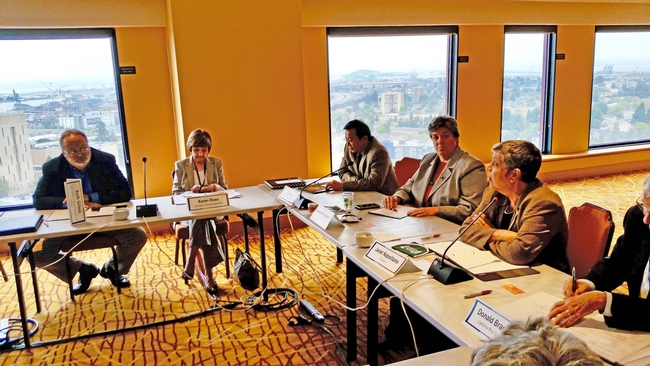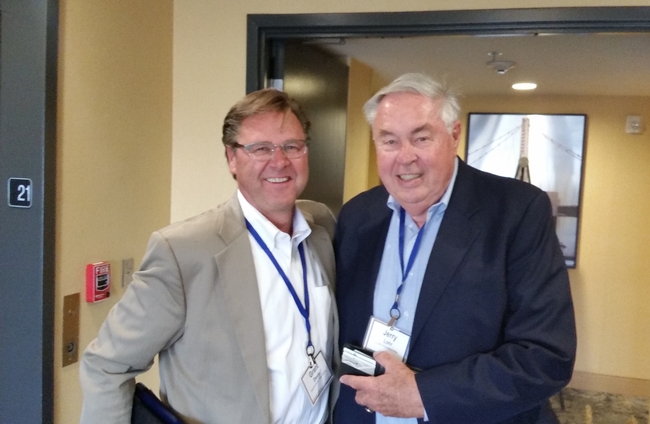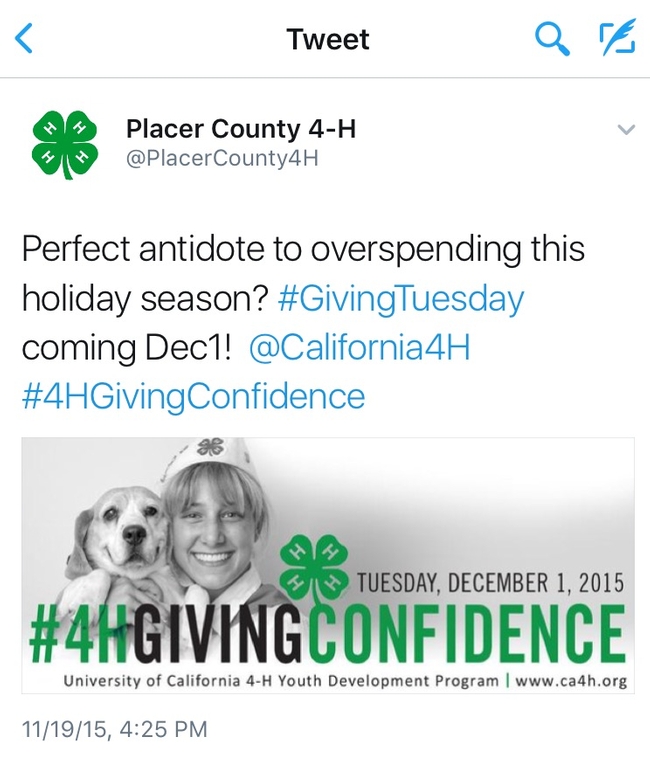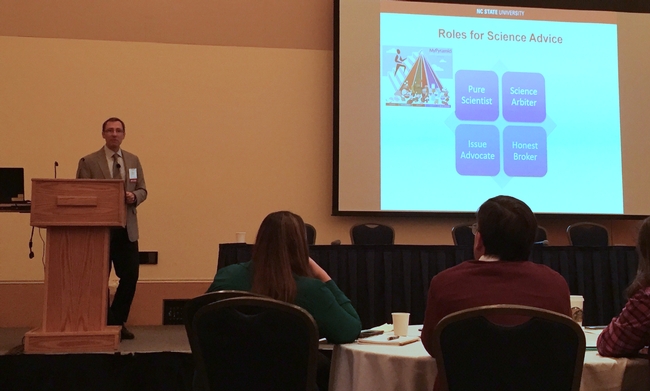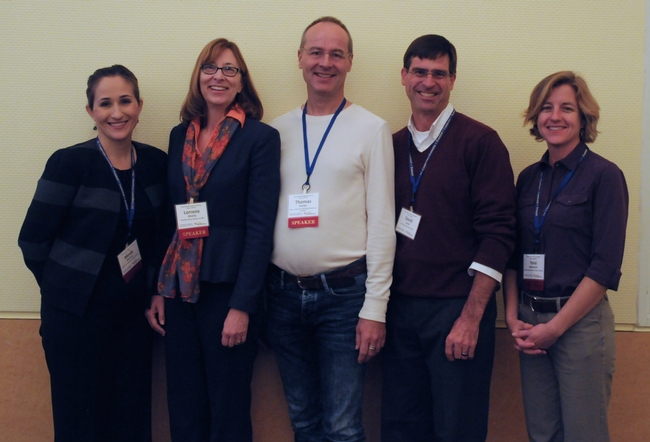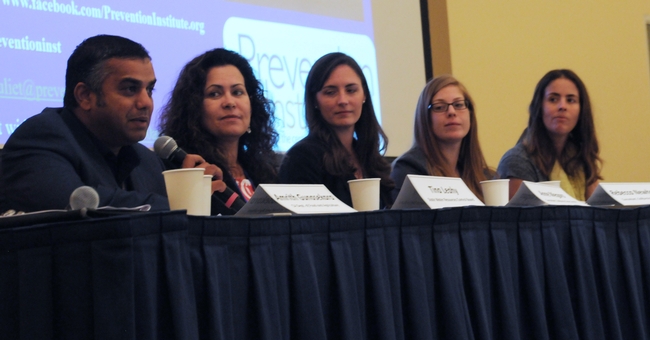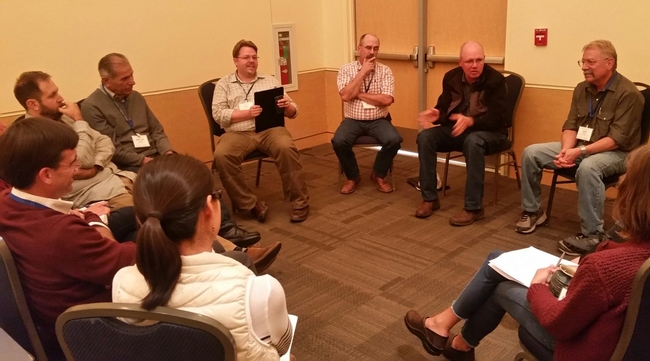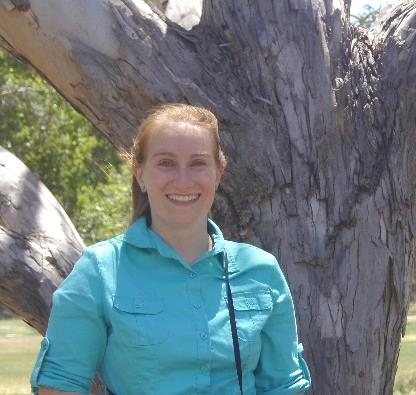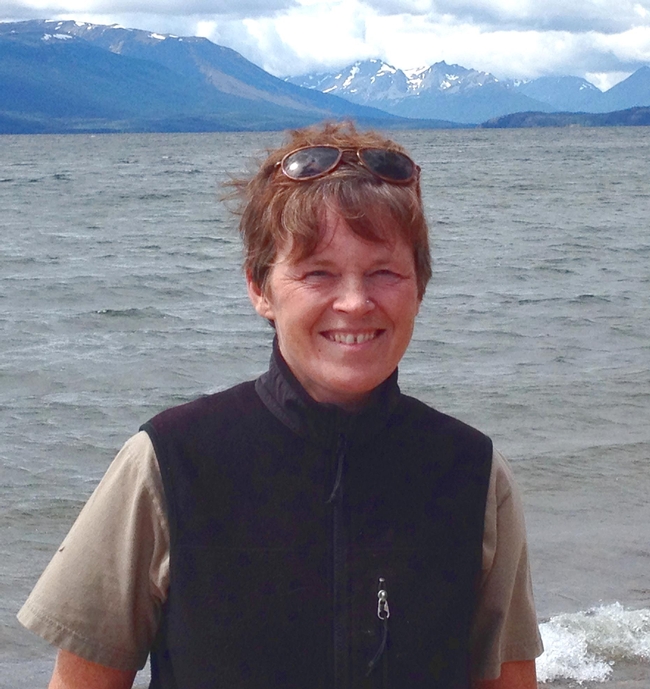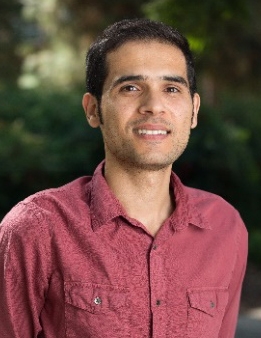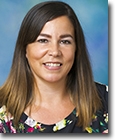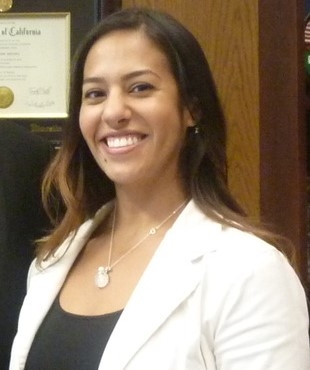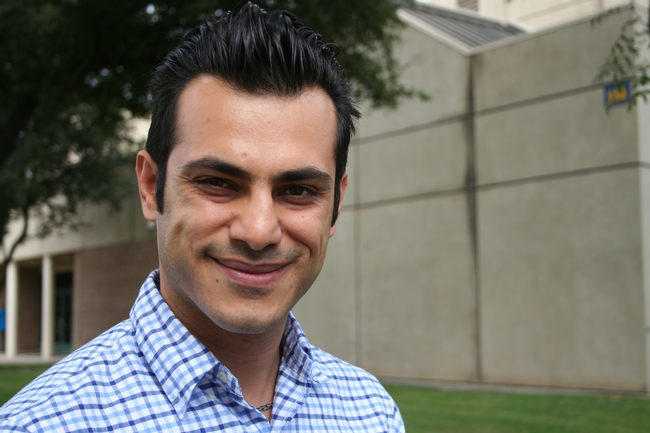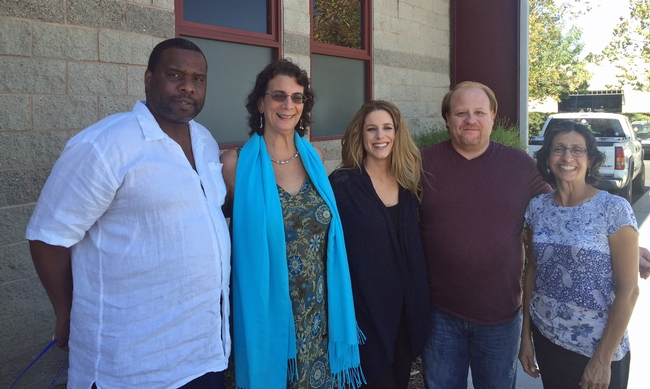Posts Tagged: President Napolitano
Advisory committee examines UC ANR structure, funding
As part of the University of California Office of the President restructuring effort, President Napolitano appointed an advisory committee to determine a set of recommendations regarding UC ANR. The committee has been asked to explore structural, funding and associated governance options that will best support UC ANR and the University of California.
The committee is chaired by David Marshall, UC Santa Barbara executive vice chancellor, and consists of UC chancellors and deans, as well as representatives of the UC Board of Regents, UC Academic Senate, UC President's Advisory Commission on ANR, and the Executive President's Advisory Group.
The advisory committee has met a few times and has received background materials on UC ANR, said VP Glenda Humiston. Future meetings will delve into how UC ANR allocates funds and prioritizes program delivery. The advisory committee will begin interviewing UC ANR stakeholders in the next few weeks.
The advisory committee's goal is to bring final recommendations to the president and UC Board of Regents before the end of the year.
PAC discusses strategic plan and urban agriculture
Downtown Oakland was the site of the biannual UC President's Advisory Commission on Agriculture and Natural Resources (PAC) meeting on Aug. 9, which included a Q&A session with President Napolitano, program presentations from UC Cooperative Extension county directors Rob Bennaton and Igor Lacan, and updates from deans Helene Dillard (UC Davis), Keith Gilless (UC Berkeley) and Kathryn Uhrich (UC Riverside), as well as Executive Associate Dean John Pascoe (filling in for Dean Michael Lairmore, UC Davis School of Veterinary Medicine).
In her opening remarks, UC ANR Vice President Glenda Humiston introduced Mark Bell, the division's new vice provost for statewide programs and strategic initiatives. Bell spoke about the strength of the UC system, the diversity of programs offered by UC ANR statewide, and his plans to leverage the strong volunteer and staff base of programs like UC Master Gardeners and 4-H.
Humiston also offered updates on the division's strategic plan and the significant progress made in implementing its key goals. Associate Vice President Tu Tran then gave a presentation on the division's financial situation, which he titled “A Fiscal Plan for Success.” Tran addressed UC ANR's place in the state budget and its revenue projections through FY 2021-22, which includes significant growth in major gifts and fundraising.
Bennaton and Lacan both gave spirited and enthusiastic presentations that were received well. Bennaton, who serves as county director for Alameda and Contra Costa counties as well as UCCE urban agriculture advisor for the Bay Area, discussed the benefits of urban agriculture and the assortment of activities going on in community development, habitat restoration and youth programming.
Lacan, also a UCCE environmental horticulture advisor for the Bay Area and co-director in San Mateo and San Francisco counties, talked about the diverse and richly rewarding work he spearheads in urban forestry. His work currently focuses on sustainable management of urban trees and urban water.
During a Q&A period, the president engaged PAC members on various issues such as potential public-private partnerships that could involve UC ANR, targeted approaches to advocacy and deferred maintenance needs for UC writ large but also for UC ANR and its research and extension centers system, specifically.
The deans gave updates on research and activities occurring at their respective colleges and school.
The next PAC meeting is scheduled for December, also in Oakland.
ANR reaches out to donors on #GivingTuesday
Last year, the 4-H Youth Development Program and UC Master Gardener Program successfully participated in #GivingTuesday campaigns.
“Our goal for 4-H was to raise $10,000 and we exceeded our goal with donations totaling over $13,000,” said Andrea Ambrose, acting director of Development Services. 4-H programs in 17 counties participated. In Placer County, the robotics team got their friends and family involved to promote #4HGivingConfidence on social media, leading Placer County to collect the largest amount for the 4-H Youth Development Program.
Although not as widely recognized as the shopping events Black Friday and Cyber Monday, #GivingTuesday appeals to people swept up in the spirit of giving at the end of the year.
“#GivingTuesday is a wonderful opportunity for all ANR programs to augment their funding with private donations,” said Ambrose.
A website is being created with links to all of ANR's programs, Research and Extension Centers and extension offices. Donors will be invited to designate the program or location to which they wish to donate. The URL for the #GivingTuesday website will be announced in ANR Update soon.
ANR will provide a toolkit for county offices and programs to participate. It will include:
- A customizable letter to send to stakeholders
- Templates for “unselfies.” Donors may take photos of themselves holding an unselfie sign and share on social media how they are giving.
- Sample tweets and social media posts
- Sample thank you note
UC Research to Policy Conference puts science into action
“We focused on fostering a good dialogue and facilitating co-learning among attendees,” said event co-chair Leslie Roche, assistant UC Cooperative Extension specialist in rangeland management. “We hosted university faculty, statewide CE specialists and academics, and county-based CE advisors—as well as local policymakers and leaders from non-governmental organizations and statewide programs.”
UC researchers who have successfully engaged in the public policy arena provided numerous models of linking research and policy. There were five key take-aways for scientists:
- Honest broker role – Present policymakers with various policy options, based on sound research. Have a clear understanding of the science behind your messaging. Use qualitative data to tell the story of the hard quantitative data.
- Active engagement – Be part of informational and oversight hearings. Empower communities to take action and foster community engagement.
- Build coalitions – Collaboration is imperative. Develop unexpected allies and foster long-term relationships, realizing it may take some time to bear fruit.
- Disseminate information – Share your data in user-friendly formats. Target local community, Legislature and state agencies to inform policies. Get your science into trainings and continuing education programs. Leverage your coalition to expand the circulation of your research results.
- Target messages – Develop a strong, concise message to deliver your research. Use an emotional connection – “Old-growth oak woodlands” versus “oak woodland.”
Throughout the conference, speakers highlighted the multiple levels of engagement for researchers in the policy arena, with different roles matching different needs – some take a center stage, while others play imperative behind-the-scenes roles.
Keynote speaker Jason Delborne, associate professor of science, policy and society at North Carolina State University, encouraged engaging the public. “Science is a social process,” he said, noting that community and public engagement is often key to successfully applying research to policy. Delborne also touched on the tension between expertise and democracy, commenting that we can't always resolve it and often we have to learn to live with this tension.
A diverse set of researchers shared their perspectives from experiences in engaging in policy. The panel included Thomas Harter, Robert M. Hagan Endowed Chair in Water Management and Policy and UCCE specialist in the Department of Land, Air, and Water Resources at UC Davis; Lorrene Ritchie, director of the UC ANR Nutrition Policy Institute; Mindy Romero, founder and director of California Civic Engagement Project at UC Davis Center for Regional Change; and Yana Valachovic, UCCE forest advisor and county director in Humboldt and Del Norte counties. They discussed the importance of building strong science-based programs, actively engaging local communities and building coalitions of support.
Guests from both government and non-government organizations who use research to shape policy shared their perspectives on translating science to decision-making.
“Science is the foundation for developing programs,” said Amrith Gunasekara, science advisor for the California Department of Food and Agriculture.
Tina Cannon Leahy, attorney with the State Water Resources Control Board, noted that policymakers and decision-makers are often looking for a clear, “black-and-white” answer, while for scientists, there is “no answer,” but rather information.
Anne Megaro, consultant to the California Senate Committee on Agriculture, and Rebecca Newhouse, consultant to the California Senate Environmental Quality Committee, both emphasized the importance of making sure science is accessible and digestible.
Juliet Sims of the Prevention Institute explained how her organization uses both published scholarly literature and community stories to effectively inform its advocacy platform.
Keynote speaker Rachel Morello-Frosch, associate professor in the Department of Environmental Science, Policy and Management at UC Berkeley, introduced the concept of moving from “translational research” to “transformational research,” a shift that requires deep community engagement in meaningful ways to effect policy change.
In the afternoon, four breakout sessions were offered: “Policy structures and opportunities for engagement” with Robert Waste, “Relational approaches to science communication and engagement” with Faith Kearns, “Putting it into practice–UC ANR case studies” with Dave Campbell, Clare Gupta and Lucas Frerichs, and “Navigating policy engagement: Education vs advocacy,” with Adrian Lopez and Kit Batten. These training modules helped participants build technical skills and analytical frameworks for successful policy engagement.
The Research to Policy Conference was a forum to exchange ideas and share perspectives, continuing to bridge the gap between science and policy communities. It challenged attendees to be open to new ways of thinking, shared innovative outreach methods and showcased how research can have an impact in the policy arena.
“The event brought cross-fertilization and co-learning between disciplines – nutrition, forest management, water quality – and there were common themes that resonated for all participants,” said event co-chair Gupta, assistant UCCE specialist in public policy and translational research.
VP Glenda Humiston wrapped up the policy conference by saying, "Good science is vital for good policy. It's great to see UC folks enhancing these skills to bring science together with policy."
For more information on applying research to policy, contact Frerichs, UC ANR government and community relations manager, at (530) 750-1218 or lfrerichs@ucanr.edu, or Research to Policy Program Team contacts Gupta at cgupta@ucdavis.edu and Roche at lmroche@ucdavis.edu.
Names in the News
Ozeran named UCCE livestock and natural resources advisor
Rebecca Ozeran joined UCCE on Sept. 12 as the area livestock and natural resources advisor in Fresno and Madera counties.
Raised in Yuba City with a passion for animals and the land that supports them, Ozeran plans to focus her research, outreach and extension education efforts on current issues impacting livestock producers and land managers in both counties.
Prior to joining UCCE, Ozeran was a range management intern for the Bureau of Land Management in the Salt Lake City field office. Her duties included collecting inventory, utilization and rangeland trend data, checking livestock compliance on BLM allotments and collaborating with local archaeologists to ensure compliance with archaeology requirements before grazing permit renewal. From July 2014 to May 2016, Ozeran was a graduate research and teaching assistant for the Department of Animal and Range Sciences at Montana State University.
She earned a B.S. in animal science with a minor in Spanish from Cal Poly, and an M.S. in animal and range sciences with a certificate in applied statistics from Montana State University. Her thesis studied patterns and risk factors of cheatgrass invasion in Montana foothills rangelands.
Ozeran is based in Fresno and be reached at (530) 415-2555 and rkozeran@ucanr.edu.
Axelson joins UCCE as forest health specialist
Jodi Axelson joined UCCE on June 1 as a UC Cooperative Extension specialist in forest health in the Department of Environmental Science, Policy and Management (ESPM) at UC Berkeley.
Axelson's broad research interests include forest resilience, adaptive management and forest disturbance; specifically, she is focused on forest dynamics and response to insect disturbances from outbreaks of bark beetles and conifer defoliators using a range of methods including dendrochronology. Learn more about her research at http://ourenvironment.berkeley.edu.
Prior to joining UCCE, Axelson was employed by the British Columbia government as a forest entomologist with Ministry of Forests, Lands and Natural Resource Operations. In this position, she was responsible for forest health issues in an area covering 42,000 square miles comprised of distinct wet- and dry-belt ecosystems. She gained considerable experience in taking into consideration timber, wildlife and land stewardship objectives when performing insect monitoring, treatment and risk-mitigation.
She earned her B.S. in geography from the University of Victoria (British Columbia, Canada), an M.S. in geography from the University of Regina (Saskatchewan, Canada) and a Ph.D. in geography from the University of Victoria.
Axelson is based at the UC Berkeley campus and can be reached at (510) 642-8459 and jodi.axelson@berkeley.edu. Follow her on Twitter @DisturbedDendro.
Haghverdi joins UCCE as urban water specialist
Amir Haghverdi joined UCCE on July 1 as a UC Cooperative Extension specialist in the Department of Environmental Sciences at UC Riverside. His research focuses on integrated urban water management.
Prior to joining UCCE, Haghverdi had been an assistant professor in the Department of Biological Systems Engineering at University of Nebraska-Lincoln, performing research and extension on irrigation and water management, since July 2015.
Haghverdi earned his B.S. in irrigation engineering from University of Tehran, Iran, an M.S. in agricultural engineering - irrigation and drainage from Bu-Ali Sina University, Iran, a Ph.D. in irrigation and drainage engineering from Ferdowsi University of Mashhad, Iran, and a Ph.D. in biosystems engineering from University of Tennessee-Knoxville.
Haghverdi can be reached at (951) 827-4774 and amir.haghverdi@ucr.edu.
Saitone named ag economics specialist
Tina Saitone joined UCCE on June 1 as a UC Cooperative Extension specialist in the Department of Agricultural and Resource Economics (ARE) at UC Davis, where she is focused on livestock and rangeland economics. Saitone conducts research on a broad range of topics in agricultural economics including food quality and safety, agricultural cooperatives, industry competition, generic commodity promotion, and federal and state marketing orders.
Prior to joining UCCE, Saitone had been a project scientist for ARE since July 2015. Before returning to UC Davis, she worked for OnPoint Analytics, an economic consulting firm in the Bay Area, where she conducted research on a wide variety of agricultural industries including meatpacking, dairy, eggs, broilers and sugar beets.
Saitone earned her B.A. in economics at Sonoma State University and her M.S. and Ph.D. in agricultural and resource economics at UC Davis.
Saitone can be reached at (530) 752-1870 and saitone@primal.ucdavis.edu.
Bautista named 4-H STEM coordinator
Jessica Bautista joined ANR on July 5 as the 4-H Science, Technology, Engineering & Mathematics (STEM) academic coordinator.
Prior to joining ANR, Bautista was a graduate research assistant in the Department of Botany and Plant Sciences at UC Riverside. Bautista's area of research interest focused on molecular biology and genetics in plant developmental biology.
As a native Californian and a first-generation student born to Mexican migrant parents, Bautista speaks Spanish and has fostered various methods to make her research accessible and advocate for STEM career paths for underrepresented communities. In 2012, Bautista co-founded UCR's Plant Discovery Day in the Department of Botany and Plant Sciences. This annual outreach event is filled with interactive science demonstrations for elementary school students in the community. She has also presented her research and discussed her career path annually since 2013 at workshops geared towards teaching and empowering young Latina women to pursue higher education and various career options.
Bautista completed a B.S. in biotechnology (chemistry minor) from California State University Northridge and a Ph.D. in plant biology from UC Riverside.
Bautista is based at the ANR building in Davis and can be reached at (530) 750-1341 and jbautista@ucanr.edu.
Pourreza wins international prize for HLB detection
Newly appointed UC Cooperative Extension agricultural engineering advisor Alireza Pourreza has been awarded the 2016 Giuseppe Pellizzi Prize by the Club of Bologna, an honor presented every other year to the best doctoral dissertations focused on agricultural machinery and mechanization. The Club of Bologna is a world taskforce on strategies for the development of agricultural mechanization.
Pourreza, who earned his Ph.D. at the University of Florida in 2014, worked on early detection of Huanglongbing disease of citrus. Huanglongbing, an incurable disease that is spread by Asian citrus psyllid, has seriously impacted citrus production in Florida. The disease has been found in commercial and residential sites in all counties with commercial citrus.
Early detection allows growers to remove infected trees before the disease can spread to healthy trees. Currently HLB infection is confirmed when leaves with yellowing blotches are submitted for PCR testing, which is expensive and time-consuming. However, the yellowing can be also symptomatic of other conditions, such as nutrient deficiency.
"We discovered we could see the symptoms of Huanglongbing using a camera, a set of cross-polarizers and narrowband lighting before it is visible to the human eye," said Pourreza, who is based at the UC Kearney Agricultural Research and Extension Center in Parlier.
He said the yellow blotches on HLB-infected leaves are caused by starch accumulation.
"If we could detect abnormal levels of starch in the leaf, we could tell it is affected with HLB," Pourreza said. "Starch showed the ability to rotate the polarization plane of light. We used this optical characteristic to develop the sensing methodology."
Pourreza said the team has patented the technique and is working on developing a commercial product. He is seeking funding to continue the research in California, where, to date, HLB has only been detected in isolated Los Angeles neighborhoods. Asian citrus psyllid is found in important California commercial citrus production regions from the Mexican border to as far north as Placer County.
4-H Youth Development team wins national diversity award
4-H Youth Development advisors Dorina Espinoza, Russell Hill, Fe Moncloa and Keith Nathaniel and 4-H associate director Shannon Horrillo have won the National Extension Diversity Award for systematically enhancing the intercultural competency of 4-H personnel and others in California.
The award, given by USDA National Institute of Food and Agriculture (NIFA), Cooperative Extension System and the Association of Public and Land-grant Universities (APLU), honors the team for creating and using Intercultural Development Inventory© to shift organizational culture. This shift includes mutual respect, acceptance, teamwork and productivity among diverse people.
To meet the needs of a culturally and ethnically diverse youth population in California, they created a professional-development intervention for 4-H academics and staff. The Intercultural Development Inventory© is a cross-culturally generalizable, valid and reliable assessment of intercultural competence. Calling themselves the Intercultural Development Inventory Qualified Administrators, they applied the strategy over three years, providing 176 hours of intercultural communication feedback sessions, learning communities and regional conferences to enhance the intercultural competence of 65 4-H personnel.
Evaluations demonstrated that after the intervention UC 4-H Youth Development Program personnel had acquired skills and characteristics to become more culturally competent. The program has moved from focusing on similarities across diverse people that can mask deeper recognition of cultural differences to recognizing the complexity of dimensions of diversity.
The action plan and resulting positive change provides the potential to improve hiring and professional development nationwide by replication in other states. A summary of California's IDI professional development activities can be found in the National 4-H Latino Youth Outreach: Best Practices Toolkit, Professional Development.
The National Extension Diversity Award will be presented on Nov. 13 at the 129th APLU Annual Meeting in Austin, Texas.

